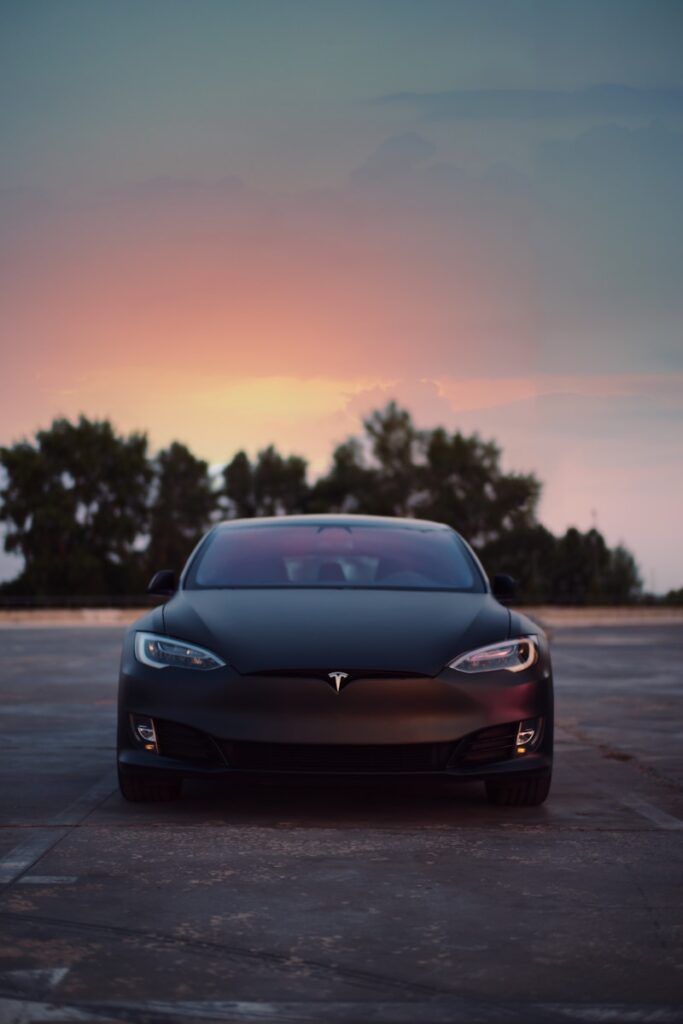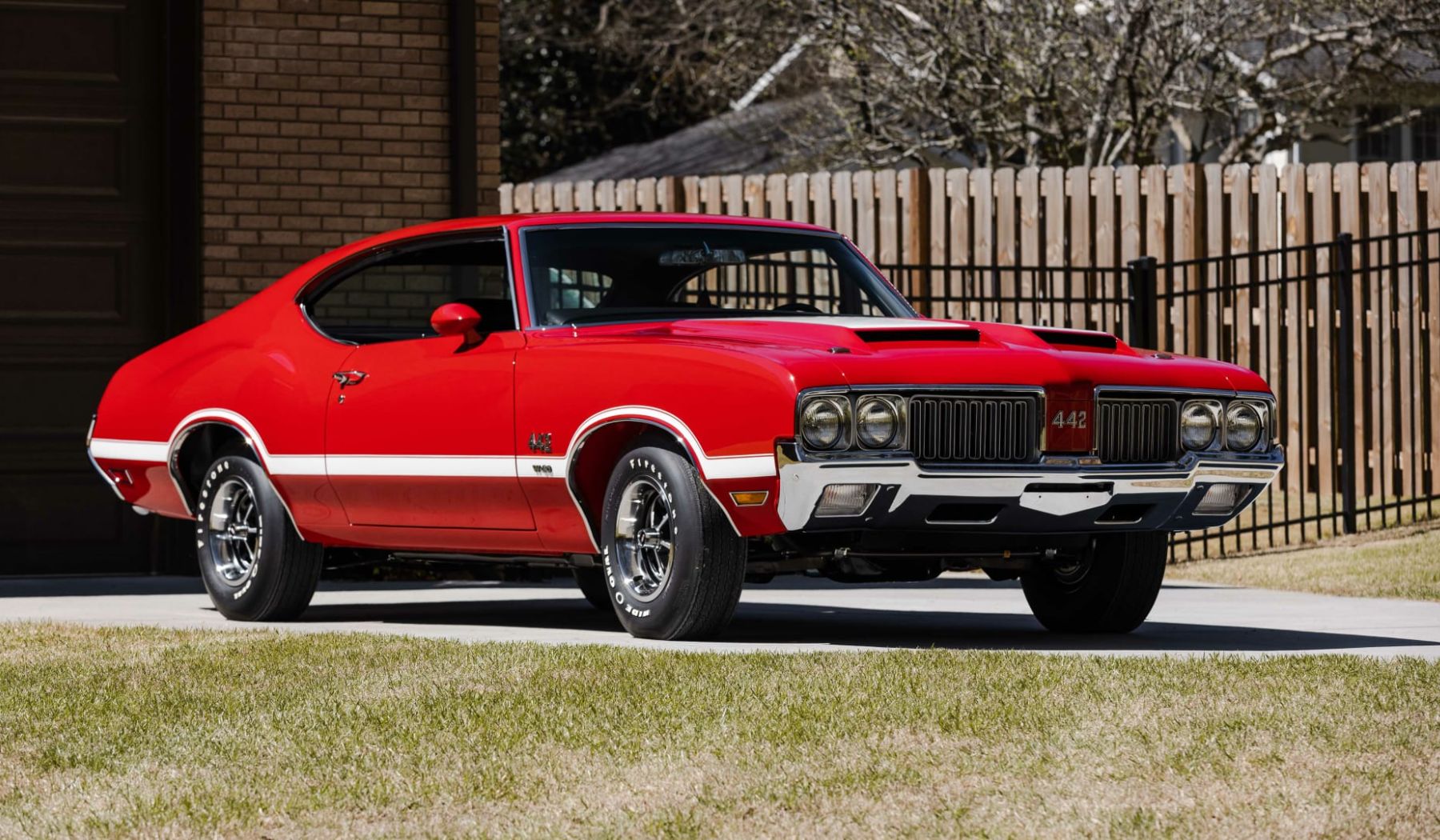
The 1970s often feels like a whispered legend in automotive circles, a time when driving stories could truly be as wild and exaggerated as they sounded. Imagine a landscape where muscle cars were powerful beyond belief, where the sheer joy of a burnout wasn’t measured in gallons per mile, and the soundtrack of the streets was a symphony of roaring V8s, chirping tires, and an exhilarating sense of unrestrained power. These weren’t just vehicles; they were metal manifestations of raw force, demanding respect, attention, and perhaps, a fresh set of bias-ply tires every oil change. It was an era where the machines were barely restrained beasts, utterly devoid of the digital nannies and comfort-focused engineering that define modern motoring.
Fast forward to today, an era dominated by whisper-quiet electric torque, omnipresent lane-keep assist, and cabins designed more for therapy sessions than high-octane thrills. The average latte-sipping motorist, accustomed to self-parking features and computerized stability, might find these snarling monsters from American muscle’s glory days to be, frankly, a bit too much car. We’re talking about raw, unfiltered horsepower delivered with minimal safety nets, and quirks that feel less like character and more like active sabotage against an unprepared driver. Yet, for a certain breed of enthusiast, these very challenges are the heart of their enduring appeal, making them feel perfectly at home for those who crave a visceral, demanding connection with the road.
This isn’t about the easiest drives or the most popular models; it’s about the machines revered for their brutal performance, audacious style, and terrifying ability to initiate an unplanned U-turn into oncoming traffic at a moment’s notice. For those who yearn for ‘Gut, Gears, and Good Ol’ Gripes,’ these 12 muscle cars from the 1970s are the ultimate test and reward. They stand as defiant monuments to an era that celebrated unadulterated power, mechanical skill, and a driving experience that was anything but effortless. Let’s dive into the first half of these magnificent, challenging beasts that continue to demand, and reward, true driving prowess.

1. **1970 Plymouth Hemi ‘Cuda** The 1970 Plymouth Hemi ‘Cuda was Detroit’s unequivocal answer to the question: “How much overkill can we pack into a mid-size chassis?” It was an engineering marvel of excess, housing a ridiculous 426 cubic-inch (7.0L) HEMI V8 under its hood. While officially rated at a formidable 425 horsepower and 490 lb-ft of torque, it was widely believed by enthusiasts and experts alike that its true output was closer to a staggering 500 horsepower, a figure that cemented its legend. This car was not just built; it was unleashed, primarily to dominate the drag strip with its brutal straight-line acceleration and intimidating presence.
However, translating that drag strip dominance to public roads was a different, far more chaotic experience. Driving the Hemi ‘Cuda felt less like piloting a sophisticated machine and more like wrangling a caffeine-addicted tank that had skipped leg day. The non-power-assisted recirculating ball steering was notoriously vague, offering suggestions of directional change rather than precise inputs. It was as communicative as a mime, leaving the driver to constantly guess and correct, a stark contrast to today’s hyper-responsive rack-and-pinion systems.
Braking was another adventure entirely. The standard drum brakes, or even the optional, barely better, power discs, were often described as a polite suggestion to slow down, frequently requiring an act of faith to halt 3,600 pounds of angry Mopar at speed. This lack of stopping power, combined with the immense thrust, meant that any sudden deceleration was a full-body workout in anticipation and prayer. Furthermore, the rear tires constantly begged for mercy, especially with the solid axle and minimal suspension compliance struggling to contain the HEMI’s relentless torque, leading to frequent loss of traction and unpredictable behavior.
For today’s average driver, who is undeniably coddled by the seamless torque maps of electric vehicles and an armada of sophisticated driver assists, the Hemi ‘Cuda would present an insurmountable challenge. They would likely wrap this untamed beast around a light pole before they even managed to locate the turn signal stalk, let alone master its unique language of power and protest. It’s a car that doesn’t just demand to be driven; it demands to be respected, understood, and ultimately, tamed by a skilled and fearless hand.
Car Model Information: 2023 Nissan Rogue SV
Caption: 1970 Hardtop Coupe
Name: Plymouth Barracuda
Manufacturer: Plymouth (automobile)
Production: 1964–1974
Assembly: Fenton, Missouri,Hamtramck, Michigan,Maywood, California,Windsor, Ontario
Layout: Front-engine, rear-wheel drive layout
Class: Pony car
Categories: 1970s cars, All articles with dead external links, All articles with unsourced statements, Articles with dead external links from February 2018, Articles with dead external links from January 2022
Summary: The Plymouth Barracuda is a two-door pony car that was manufactured by Chrysler Corporation from 1964 through 1974 model years.
The first-generation Barracuda was based on the Chrysler A-body and was offered from 1964 until 1966. A two-door hardtop (no B-pillar) fastback design, it shared a great majority of parts and bodywork with the Plymouth Valiant, except for the distinctive wraparound rear glass.
The second-generation Barracuda, though still Valiant-based, was heavily redesigned. Built from 1967 through 1969, it was available as a two-door in fastback, notchback, and convertible versions.
The third generation, offered from 1970 until 1974, was based on the Chrysler E-body, exclusive to it, and the slightly larger Dodge Challenger. A completely new design, the two-door Barracuda was available in hardtop and convertible body styles.
Get more information about: Plymouth Barracuda
Buying a high-performing used car >>>
Brand: Plymouth Model: Hemi ‘Cuda
Price: $21,810 Mileage: 17,649 mi.
Read more about: 9 Legendary Muscle Cars That Vanished: A Nostalgic Drive into an Era’s Fading Glory
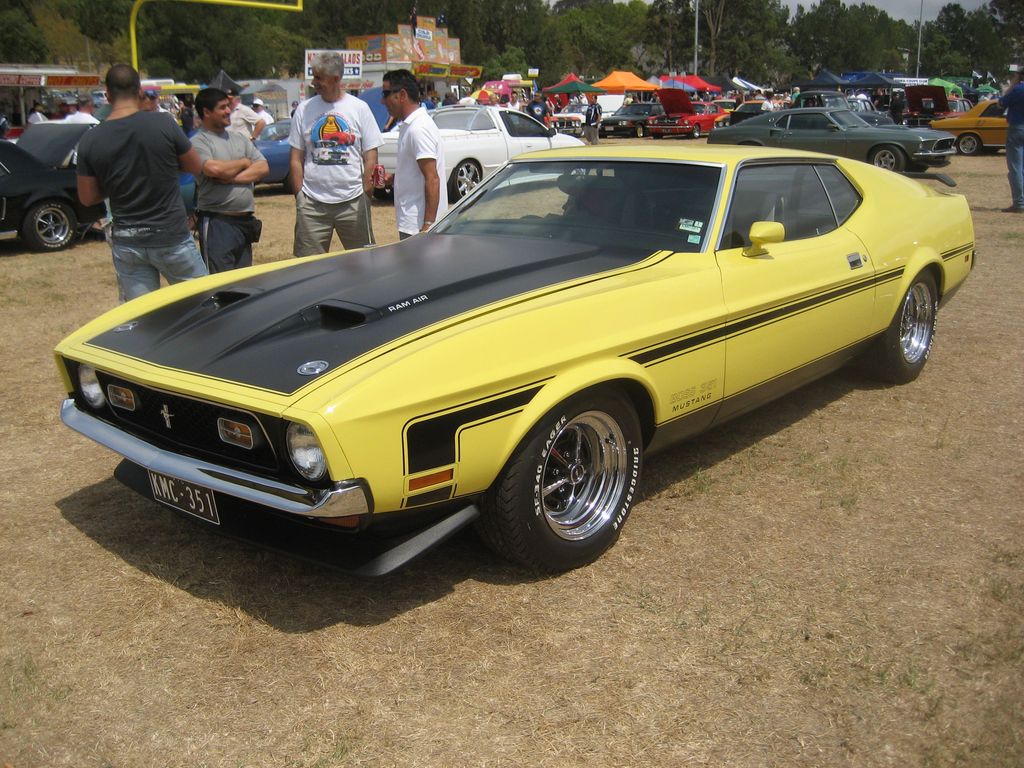
2. **1971 Ford Mustang Boss 351** The 1971 Ford Mustang Boss 351 arrived somewhat late to the initial muscle car party, yet it immediately made its presence known, bringing serious hardware that screamed, “I didn’t come to make friends.” Underneath its aggressive hood lay a high-winding, solid-lifter 351 cubic-inch (5.8L) Cleveland V8, an engine officially rated at 330 horsepower. However, much like many of its contemporaries, it was notorious among enthusiasts for producing significantly more power in the real world, eager to unleash its full fury at a moment’s notice.
This was an engine designed for performance, not for casual cruising. It revved high, demanding constant attention and precision from the driver, particularly when working through its mandatory 4-speed manual transmission. Every shift was an engaging, almost confrontational act, requiring significant physical effort and impeccable timing. For purists, power steering was an optional luxury that was rarely chosen, meaning every turn, every adjustment, was a full-body workout. The notion of air conditioning in such a driver-focused machine was, for many, a mere fantasy, prioritizing raw performance over creature comforts.
The car’s heavy front end, coupled with a notoriously twitchy rear, meant that any lapse in driver focus or skill would be swiftly and unforgivingly punished. Navigating a corner required immense concentration and a delicate balance of throttle and steering inputs, as the car was always on the verge of breaking traction. Forget about the mundane task of parallel parking this beast in a crowded Starbucks lot; if your arms somehow don’t give out after wrangling that incredibly heavy steering wheel, your nerves will almost certainly be frayed to breaking point.
The Boss 351 was unequivocally a driver’s car, conceived and built to demand respect and skill, not to serve as a comfortable cruiser for passively scrolling through TikTok. There’s a widely acknowledged reason why even the legendary hitman John Wick drives a replica of a Boss Mustang; not even the world’s greatest wheelman could pilot an actual Boss without the risk of a scratch, a testament to its raw, untamed nature and the formidable challenge it presents to anyone behind the wheel.
Car Model Information: 2023 Nissan Rogue SV
Name: Mustang (first generation)
Caption: 1965 Ford Mustang
Aka: Ford T5 (Germany)
Manufacturer: Ford Motor Company
Assembly: Unbulleted list
Production: March 1964 – June 1973
ModelYears: 1965–1973
Class: Unbulleted list
BodyStyle: Unbulleted list
Layout: Front-engine, rear-wheel drive layout
Designer: Gale Halderman
Related: Unbulleted list
Successor: Ford Mustang (second generation)
Categories: 1970s cars, All Wikipedia articles written in American English, All articles with unsourced statements, Articles with short description, Articles with unsourced statements from January 2020
Summary: The first-generation Ford Mustang was manufactured by Ford from March 1964 until 1973. The introduction of the Mustang created a new class of automobiles known as pony cars. The Mustang’s styling, with its long hood and short deck, proved wildly popular and inspired a host of competition.
It was introduced on April 17, 1964, as a hardtop and convertible, with the fastback version following in August 1964. Upon introduction, the Mustang, sharing its platform with the Falcon, was slotted into the compact car segment.
The first-generation Mustangs grew in overall dimensions and engine power with each revision. The 1971 model featured a drastic redesign. After an initial surge, sales steadily declined, and Ford began working on a new generation Mustang. With the onset of the 1973 oil crisis, Ford was prepared, having already designed the smaller Mustang II for the 1974 model year. This new car shared no components with preceding models.
Get more information about: Ford Mustang (first generation)
Buying a high-performing used car >>>
Brand: Ford Model: Mustang Boss 351
Price: $21,810 Mileage: 17,649 mi.
Read more about: Power, Style, and Legacy: 14 Classic Cars from the ’70s That Live On
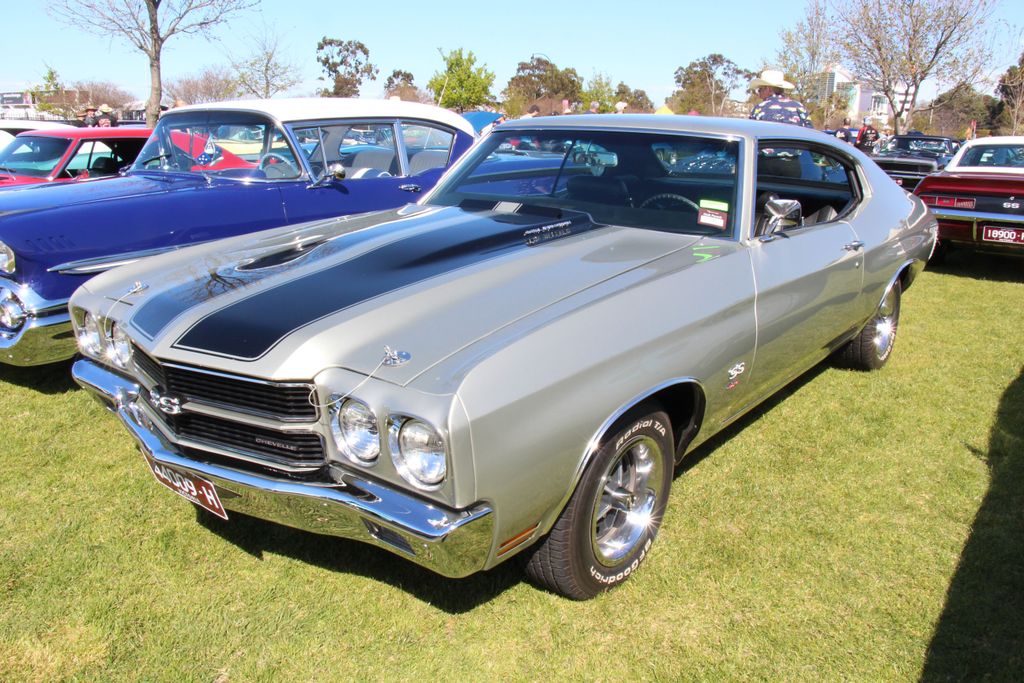
3. **1970 Chevrolet Chevelle SS 454 LS6** Arguably one of the meanest, most unapologetic muscle cars ever unleashed from Detroit, the 1970 Chevrolet Chevelle SS 454 LS6 was a true automotive icon. It packed a massive 454 cubic-inch (7.4L) big-block V8, an engine so potent it was officially rated at a brutal 450 horsepower and an earth-shattering 500 lb-ft of torque. This powertrain wasn’t just powerful; it was capable of altering time zones with its sheer ferocity in a straight line, making it frighteningly fast and incredibly exhilarating.
However, its straight-line prowess was often counterbalanced by a truly terrifying demeanor in the corners. The sheer power of the LS6 engine utterly outmatched the car’s rudimentary live rear axle and basic leaf spring suspension. This fundamental imbalance frequently led to chronic wheel hop under hard acceleration, transforming what should have been a controlled launch into an unpredictable, adrenaline-fueled battle for traction and stability. The car’s behavior in these situations could be wildly erratic, demanding constant, skilled correction from the driver.
Braking from highway speeds in the Chevelle SS 454 LS6 was less a controlled stop and more an act of desperate faith. Relying on marginal power discs up front and drums out back, bringing this much mass and momentum to a halt required not only a heavy foot but also significant foresight and a touch of bravery. Modern drivers, who are accustomed to advanced computerized stability and braking assists that intervene seamlessly, would likely chicken out long before using even half of this car’s available power, finding its unassisted, raw dynamics overwhelming and unpredictable.
Controlling the notorious wheel hop without the intervention of a microchip or an array of sophisticated electronic nannies is a skill almost entirely lost on today’s motorists. The Chevelle SS 454 LS6 embodies a driving philosophy where the car actively challenges the driver, where skill and intuition trump technology, and where every surge of power is a reminder of a bygone era of pure, unadulterated mechanical might. It remains a legendary powerhouse, but one that starkly exposes the vast differences in driving expectations between then and now.
Car Model Information: 1969 Chevrolet Chevelle SS
Name: Chevrolet Chevelle
Caption: 1970 Chevrolet Chevelle SS 396 Sport Coupe
Manufacturer: Chevrolet
Production: 1963–1977
ModelYears: 1964–1977
Class: Mid-size
Platform: GM A platform (RWD)
Layout: FR layout
Successor: Chevrolet Malibu
Categories: 1970s cars, All articles needing additional references, All articles that may contain original research, All articles with specifically marked weasel-worded phrases, All articles with unsourced statements
Summary: The Chevrolet Chevelle is a mid-sized automobile that was produced by the Chevrolet division of General Motors (GM) in three generations for the 1964 to 1977 model years. Part of the GM A-body platform, the Chevelle was one of Chevrolet’s most successful nameplates. Body styles included coupes, sedans, convertibles, and station wagons. The “Super Sport” versions were produced through the 1973 model year and Lagunas from 1973 through to 1976.
After a four-year absence, the El Camino was reintroduced as part of the new Chevelle lineup in 1964.
From 1964 to 1969, GM of Canada sold a modified version of the Chevelle that included a Pontiac-style grille, and a LeMans instrument panel, marketed as the Beaumont.
The Malibu was the top-of-the-line model to 1972, and completely replaced the Chevelle nameplate starting with the redesigned, and downsized 1978 model year.
Get more information about: Chevrolet Chevelle
Buying a high-performing used car >>>
Brand: Chevrolet Model: Chevelle
Price: $119,550 Mileage: 93 mi.
Read more about: Ignite Your Passion: 15 Iconic Cars That Still Dominate Men’s Automotive Dreams and Inspire Unforgettable Drives

4. **1973 Pontiac Firebird Trans Am SD-455** Do not let the iconic screaming chicken decal adorning its hood deceive you; the 1973 Pontiac Firebird Trans Am SD-455 was a genuine bruiser, a defiant anomaly that seemed to mock the era’s looming emissions regulations. At its heart was the Super Duty 455 cubic-inch (7.5L) V8, an engine conservatively rated at 290 horsepower (net), but renowned for producing truly massive low-end torque, often exceeding 400 lb-ft. This car possessed the raw capability to light up its rear tires with what felt like a mere sneeze, announcing its presence with a thunderous roar.
This Trans Am was heavy, incredibly fast, and unbelievably loud, embodying a visceral driving experience that assaulted the senses in the most thrilling way. Shifting through its four-speed Muncie manual transmission was less a casual action and more an Olympic event, demanding deliberate, forceful inputs and precise timing from the driver. The car, in its very essence, genuinely hated being driven gently; it yearned to be pushed, to be unleashed, thriving on aggressive inputs and high-octane performance.
In today’s world, characterized by quiet cabins, sophisticated sound deadening, and automatic climate control, driving the 1973 Trans Am SD-455 feels akin to being trapped inside a thunderstorm that’s somehow been crammed into a gym bag. The sheer cacophony of the engine, the road noise, and the vibrations create an immersive, yet overwhelming, auditory experience that stands in stark contrast to modern automotive serenity. Adding to the challenge, visibility was laughably bad, thanks to that steeply raked windshield and the massive C-pillars that created significant blind spots.
A modern driver might easily back over their own mailbox without even noticing it, a testament to the car’s singular focus on performance over convenience or outward visibility. The SD-455 was loud, proud, and completely unconcerned with trivialities like driver convenience or subtle aesthetics. It was a beast designed to be felt, heard, and battled with, offering an unfiltered, raw connection to the road that few contemporary vehicles can even begin to replicate.
Car Model Information: 2023 Nissan Rogue SV
Name: Pontiac Firebird
Caption: The second, third, and fourth generations of,the Pontiac Firebird Trans Am
Manufacturer: Pontiac (automobile)
Production: February 23, 1967 – August 30, 2002
ModelYears: 1967 – 2002
Class: Pony car,Muscle car
Platform: GM F platform
Related: Chevrolet Camaro
Layout: Front engine, rear-wheel-drive layout
Categories: 1970s cars, 1980s cars, 1990s cars, 2000s cars, All articles with dead external links
Summary: The Pontiac Firebird is an American automobile built and produced by Pontiac from the 1967 to 2002 model years. Designed as a pony car to compete with the Ford Mustang, it was introduced on February 23, 1967, five months after GM’s Chevrolet division’s platform-sharing Camaro. This also coincided with the release of the 1967 Mercury Cougar, Ford’s upscale, platform-sharing version of the Mustang.
The name “Firebird” was also previously used by GM for the General Motors Firebird series of concept cars in the 1950s.
Get more information about: Pontiac Firebird
Buying a high-performing used car >>>
Brand: Pontiac Model: Firebird Trans Am
Price: $21,810 Mileage: 17,649 mi.
Read more about: Unleash Your Inner Enthusiast (If Your Wallet Allows): 11 Vintage Cars That Will Break the Bank to Restore
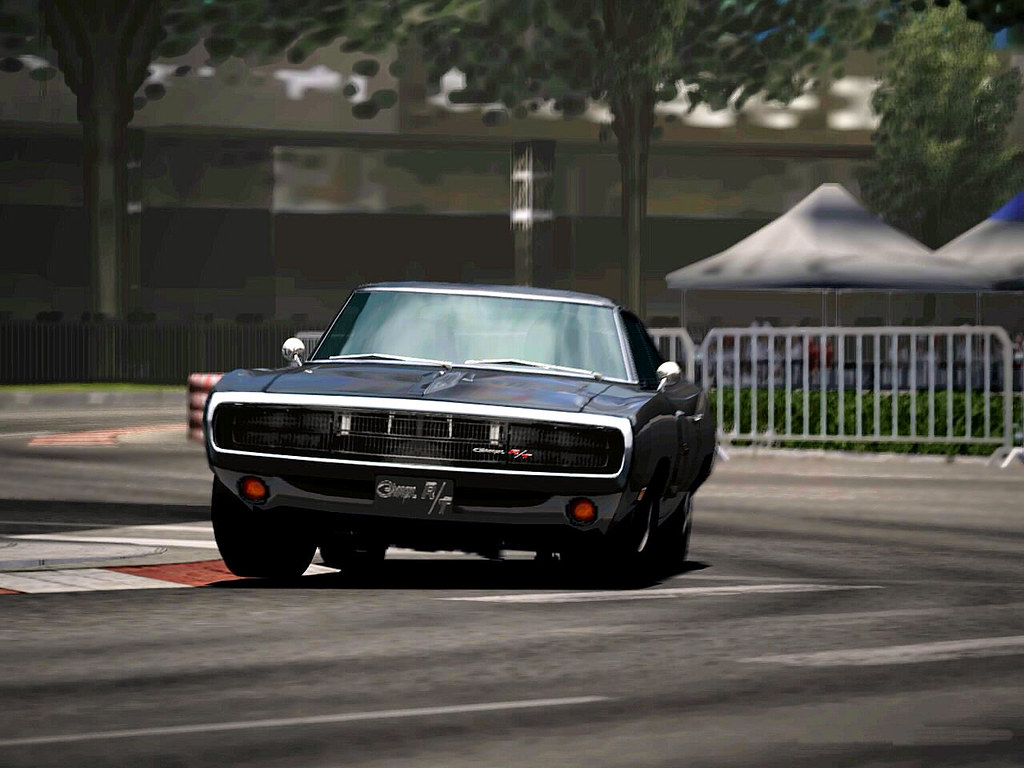
5. **1970 Dodge Charger R/T 440** With a menacing stance that commanded attention and three Holley 2-barrel carburetors hungrily feeding its 440 cubic-inch (7.2L) Magnum V8, the 1970 Dodge Charger R/T was less a car and more a mobile explosion. Officially rated at 375 horsepower, or an even more potent 390 horsepower with the legendary Six-Pack setup, this machine didn’t just look menacing; it acted accordingly, embodying an aggressive character that was evident in every facet of its design and performance.
Its colossal boat-length proportions, stretching over 17 feet long, combined with a laughably terrible turning radius, made keeping the Charger R/T within lane lines a constant, white-knuckle challenge. Navigating tight city streets or even a moderately complex parking lot required an incredible amount of effort and foresight, a stark contrast to the effortless maneuverability of modern vehicles. The sheer bulk of the car was a force to be reckoned with, requiring the driver’s full, undivided attention at all times.
Modern drivers would struggle mightily with its immense size and the complete lack of any meaningful feedback from the vague, unassisted steering. The steering wheel required significant input for even minor directional changes, feeling more like an advisory panel than a precision instrument. Moreover, the Charger R/T’s brakes were genuinely terrifying, often consisting of 10-inch drums all around, with optional power discs that offered only a marginal improvement. Getting this beast up to warp speed was surprisingly easy; stopping it without divine intervention or the assistance of a concrete barrier was frequently a very different, far more harrowing, story.
Yet, for those who possessed the skill and the sheer grit to handle it, the 1970 Dodge Charger R/T 440 offered an unparalleled driving experience. The context even hints at its prowess, suggesting that if you could truly handle this powerful machine, you could find yourself taking on a Dodge Demon, a testament to its raw, untamed power. It remains a legendary icon, demanding the utmost respect and skill from its pilot, and delivering an unforgettable, exhilarating ride in return.
Car Model Information: 2023 Nissan Rogue SV
Name: Dodge Charger (1966)
Layout: FR layout
Caption: 1969 Dodge Charger R/T
Manufacturer: Dodge
Successor: Dodge Magnum#1978
Production: 1966–1978
Class: Mid-size,Muscle car
Platform: Chrysler B platform
Categories: 1960s cars, 1970s cars, All articles needing additional references, Articles needing additional references from January 2014, Articles with short description
Summary: The Dodge Charger (1966), also known as Dodge Charger (B-body), is a mid-size automobile that was produced by Dodge from 1966 through 1978 model years, and was based on the Chrysler B platform.
Get more information about: Dodge Charger (1966)
Buying a high-performing used car >>>
Brand: Dodge Model: Charger R/T 440
Price: $21,810 Mileage: 17,649 mi.
Read more about: Ignite Your Passion: 15 Iconic Cars That Still Dominate Men’s Automotive Dreams and Inspire Unforgettable Drives
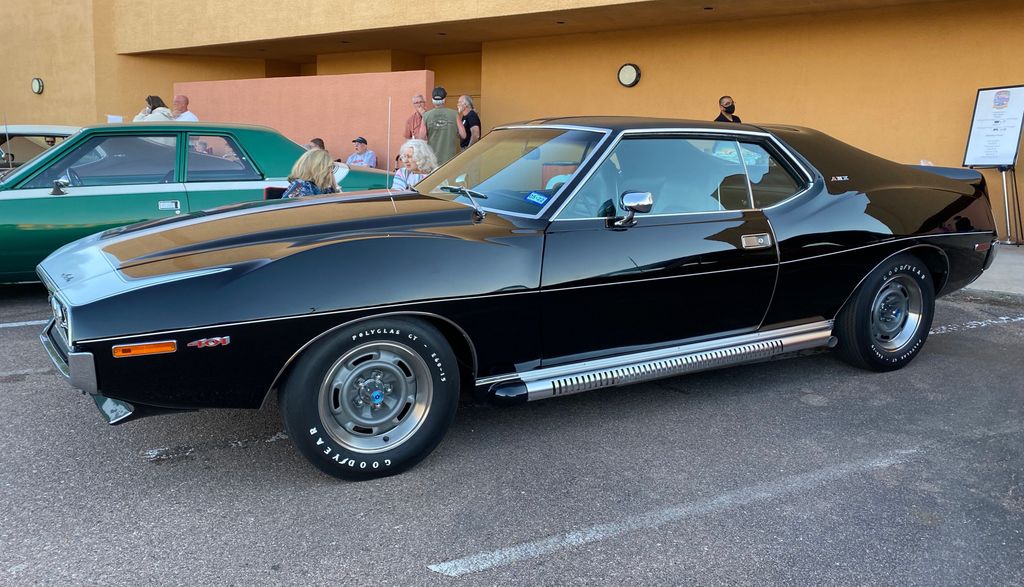
6. **1971 AMC Javelin AMX 401** AMC’s unique, yet undeniably cool, foray into the muscle car segment was the 1971 Javelin AMX 401. This distinctive machine packed a potent 401 cubic-inch (6.6L) V8, rated at a healthy 330 horsepower, and exuded heaps of personality. However, it was also quirky to a fault, a characteristic that both endeared it to some and frustrated others. Its unconventional nature set it apart from its more mainstream competitors, forging its own path in the annals of muscle car history.
From a driver’s perspective, the Javelin AMX 401 presented some distinct ergonomic challenges. The driving position felt as if it had been designed for a contortionist, requiring an unnatural posture to comfortably reach the controls and view the road. Adding to this unique experience, the dashboard controls were laid out in a manner so idiosyncratic, one might imagine them designed by a committee of jazz musicians on a particularly spirited bender, demanding a learning curve and patience from anyone unfamiliar with its eccentricities.
The engine itself, while powerful, was a temperamental hothead, notoriously known for being finicky and requiring constant mechanical babysitting. When the AMC Javelin AMX ran, it ran hard and sounded glorious, delivering a thrilling burst of power and an evocative soundtrack. However, it didn’t always want to run, leading to frustrated owners and frequent visits to mechanics who, in a humorous nod to its robust but often challenging nature, likely specialized in tractors rather than high-performance automobiles.
Today’s drivers, accustomed to plug-and-play reliability and intuitive interfaces, would undoubtedly be utterly bewildered by the strange ergonomics and the constant need for mechanical attention and troubleshooting. The 1971 AMC Javelin AMX 401 was a car that exemplified character and raw power, but it was not for the faint of heart or the mechanically disinclined. Still, it looked fantastic parked, often because that’s precisely where it chose to break down, adding a layer of ironic charm to its legacy. Its quirkiness and wild behavior, however, made it perfectly suited for a chaotic apocalyptic world, like that of Furiosa, though perhaps less ideal for a serene commute to work.
Car Model Information: 2023 Nissan Rogue SV
Name: AMC Javelin
Caption: 1971 AMC Javelin SST
Manufacturer: American Motors Corporation
Aka: unbulleted list
Production: 1967–1974
ModelYears: 1968–1974
Assembly: unbulleted list
Designer: Dick Teague
Class: unbulleted list
BodyStyle: hardtop
Layout: Front-engine, rear-wheel drive layout
Platform: AMC’s “junior” cars
Predecessor: Rambler Marlin
Categories: 1970s cars, AMC vehicles, All articles that may contain original research, All articles with dead external links, All articles with unsourced statements
Summary: The AMC Javelin is an American front-engine, rear-wheel-drive, two-door hardtop automobile manufactured by American Motors Corporation (AMC) across two generations, 1968 through 1970 and 1971 through 1974 model years. The car was positioned and marketed in the pony car market segment.
Styled by Dick Teague, the Javelin was available in a range of trim and engine levels, from economical pony car to muscle car variants. In addition to manufacture in Kenosha, Wisconsin, Javelins were assembled under license in Germany, Mexico, Philippines, Venezuela, as well as Australia – and were marketed globally. American Motors also offered discounts to U.S. military personnel, and cars were taken overseas.
The Javelin won the Trans-Am race series in 1971, 1972, and 1976. The second-generation AMX variant was the first pony car used as a standard vehicle for highway police car duties by an American law enforcement agency.
Get more information about: AMC Javelin
Buying a high-performing used car >>>
Brand: AMC Model: Javelin AMX 401
Price: $21,810 Mileage: 17,649 mi.
Read more about: Burning Rubber and Breaking Hearts: 15 Iconic 1970s Muscle Cars That Still Reign Supreme
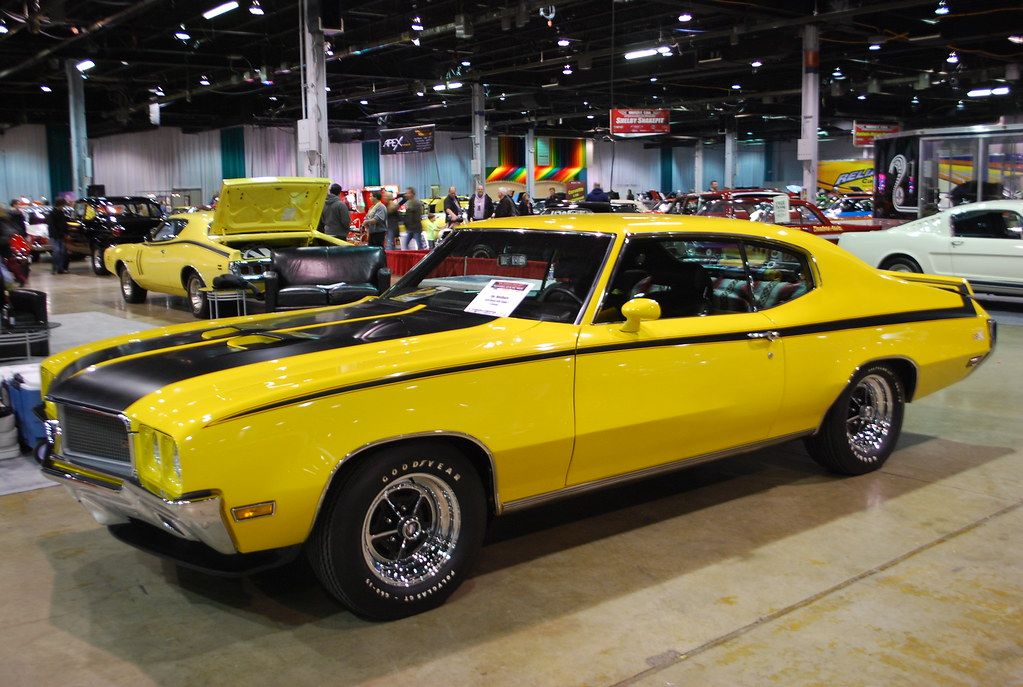
7. **1970 Buick GSX Stage 1**The 1970 Buick GSX Stage 1 boldly defied expectations, presenting itself as the automotive equivalent of a venerable grandpa suddenly wielding a chainsaw. Do not be deceived by the seemingly placid Buick badge; beneath its hood lurked a monstrous 455 cubic-inch (7.5L) Stage 1 V8. This powerhouse delivered a brutal, segment-leading 510 lb-ft of torque, a figure unmatched by any other American production car at the time. With 360 horsepower also on tap, this machine was deceptively fast and capable of launching like a rocket, albeit from what felt like a plush La-Z-Boy recliner.
This was a car built around raw, effortless grunt, prioritizing massive power delivery over any semblance of surgical precision or digital convenience. The Stage 1 engine was a masterclass in low-end torque, ensuring that even a gentle throttle input could provoke a thrilling surge forward. Its formidable capabilities made it a drag strip contender, where straight-line dominance was the ultimate measure of prowess. The GSX Stage 1 was a visceral statement, a testament to an era when sheer force reigned supreme, unburdened by today’s complex expectations.
Drivers accustomed to the razor-sharp inputs and taut chassis of contemporary vehicles would find themselves utterly lost in the GSX’s uniquely floaty, disconnected responses. The sheer magnitude of its body roll was an experience in itself, demanding a complete re-evaluation of what ‘handling’ truly meant. Modern motorists, used to instantaneous feedback and precise control, would be perpetually guessing the car’s intentions, wrestling with its deliberate lack of agility. The soft Buick suspension, while contributing to a comfortable ride on smooth roads, transformed any spirited cornering into a boat-like experience.
Beyond the dynamic challenges, imagine the frustration of someone trying to seamlessly Bluetooth their smartphone to the car’s archaic 8-track player. The technology divide alone highlights the chasm between the two eras. This Buick was a machine that demanded respect for its power, not for its connectivity or advanced driver aids. It represented a raw, unfiltered connection to the road, far removed from the insulated, assisted drives of today.
Car Model Information: 2023 Nissan Rogue SV
Name: Gran Sport
Logo: Buick gs emblem.png
Producttype: Performance car
Currentowner: General Motors
Producedby: General Motors
Introduced: [object Object]
Related: T-Type
Markets: U.S.
Categories: All Wikipedia articles in need of updating, All articles with unsourced statements, Articles with short description, Articles with unsourced statements from September 2020, Articles with unsourced statements from September 2025
Summary: The Gran Sport name has been used on several high-performance cars built by General Motors for its Buick brand since 1965. In the GM brands hierarchy, Buick was surpassed in luxury and comfort appointments only by Cadillac, which did not produce performance models. As a result, the Buick GS series were the most opulently equipped GM sport models of their era.
The Gran Sport performance enhancements on all Buick products during this era sought to affirm Buick’s tradition of producing powerful and comfortable products going back to the 1930s when all Buicks of the time were upgraded to the Buick Fireball Straight Eight, then installed the 278 cu in (4.6 L) Roadmaster engine in the shortest model Special and introduced the Century, known as “the banker’s hot rod” with a three speed synchromesh manual transmission. The Gran Sport sought to identify cars that were fun to drive with a luxury approach.
Get more information about: Buick Gran Sport
Buying a high-performing used car >>>
Brand: Buick Model: GSX Stage 1
Price: $21,810 Mileage: 17,649 mi.
Read more about: 9 Legendary Muscle Cars That Vanished: A Nostalgic Drive into an Era’s Fading Glory
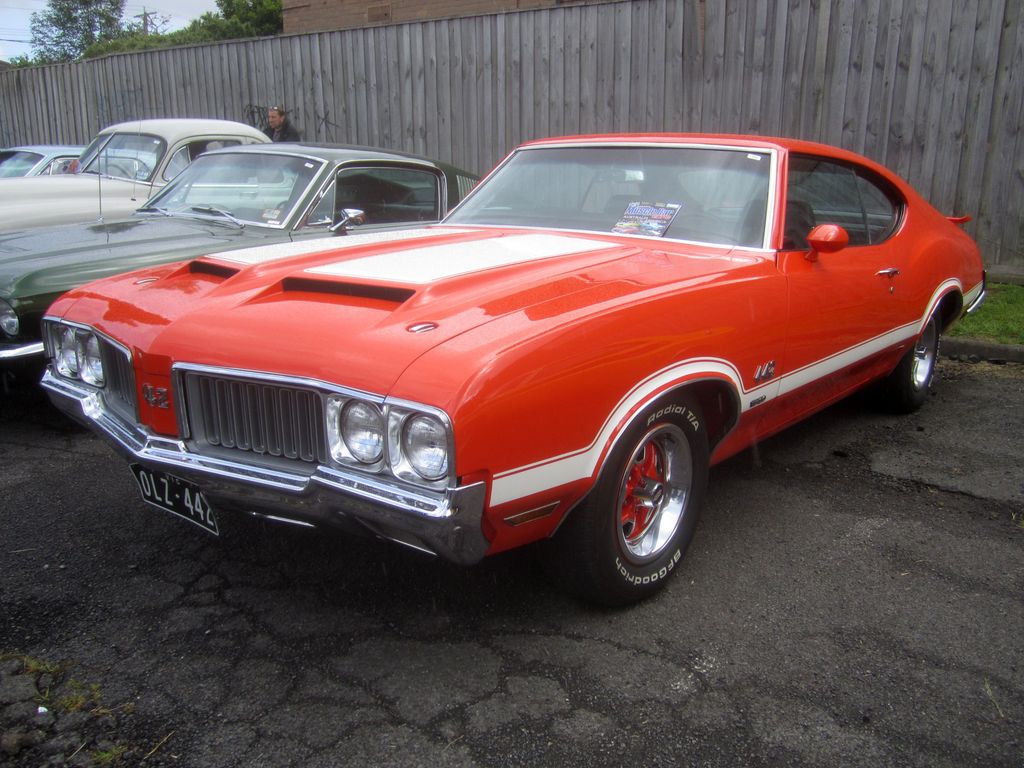
8. **1970 Oldsmobile 442 W-30**The 1970 Oldsmobile 442 W-30 has often been celebrated as one of the most “balanced” muscle cars of its era, positioned as the gentleman’s street fighter. It exuded refinement, offered impressive speed, and was remarkably well-mannered, at least by the demanding standards of 1970. However, for a modern driver, this acclaimed “balance” would undeniably translate into an experience that felt like unadulterated chaos. Beneath its relatively understated exterior, it packed a mighty 455 cubic-inch (7.5L) V8, churning out a formidable 370 horsepower and an earth-shaking 500 lb-ft of torque.
This potent combination meant that an aggressive throttle press could, and often would, cause the rear tires to vanish in a cloud of smoke, making any “spirited” driving a high-stakes gamble against the fundamental laws of physics. In an age devoid of traction control or anti-lock braking systems, the driver’s skill was the only safety net. The sheer grunt of the W-30 engine ensured that power was always on tap, ready to overwhelm the available grip at a moment’s notice.
While its suspension was indeed tighter than many of its rivals, the car still featured a solid rear axle that would bounce with surprising enthusiasm over anything but the smoothest, most billiard-table-like pavement. Braking performance was, frankly, barely adequate for attempting to halt such a substantial mass, with the rear drums proving particularly prone to fading faster than one’s faith in its handling capabilities. The recirculating ball steering system was characterized by its inherent slowness and vague feedback, frequently necessitating multiple, deliberate turns just to navigate a common parking lot.
The thought of attempting to back this magnificent beast into a tight parking space is almost laughable; its tiny mirrors and massive turning radius guaranteed a multi-point turn spectacle of epic proportions. Yet, for all its dynamic imperfections, the engine’s glorious roar alone made the risk of potential dents almost worth it, a symphonic reminder of its untamed spirit. The Oldsmobile 442 W-30 was a car that offered a sophisticated brute force, challenging drivers to master its powerful yet demanding nature.
Car Model Information: 1969 Oldsmobile 442
Name: Oldsmobile 442
Manufacturer: Oldsmobile
ModelYears: 1964–1980,1985–1987,1990–1991
Class: Muscle car
Layout: FR layout
Caption: 1971 Oldsmobile 442
Categories: 1960s cars, 1970s cars, 1980s cars, All articles with unsourced statements, Articles with short description
Summary: The Oldsmobile 4-4-2 is a muscle car produced by Oldsmobile between the 1964 and 1987 model years. Introduced as an option package for US-sold F-85 and Cutlass models, it became a model in its own right from 1968 to 1971, spawned the Hurst/Olds in 1968, then reverted to an option through the mid-1970s. The name was revived in the 1980s on the rear-wheel drive Cutlass Supreme and early 1990s as an option package for the new front-wheel drive Cutlass Calais.
The “4-4-2” name (pronounced “Four-four-two”) derives from the original car’s four-barrel carburetor, four-speed manual transmission, and dual exhausts. It was originally written “4-4-2” (with badging showing hyphens between the numerals), and remained hyphenated throughout Oldsmobile’s use of the designation. Beginning in 1965, the 4-4-2s standard transmission was a three-speed manual along with an optional two-speed automatic and four-speed manual, but were still badged as “4-4-2″s.
Because of this change, from 1965 on, according to Oldsmobile brochures and advertisements, the 4-4-2 designation referred to the 400 cubic inch engine, four-barrel carburetor, and dual exhausts. By 1968, badging was shortened to simply “442”, but Oldsmobile brochures and internal documents continued to use the “4-4-2” model designation.
Get more information about: Oldsmobile 442
Buying a high-performing used car >>>
Brand: Oldsmobile Model: 442
Price: $43,990 Mileage: 24,000 mi.
Read more about: Unleashing American Thunder: The 13 Most Iconic Muscle Cars Ever Built for Speed Enthusiasts

9. **1971 Mercury Cyclone Spoiler 429**The 1971 Mercury Cyclone Spoiler made an unforgettable entrance, presenting itself as big, brash, and unapologetically blunt. It roared onto the scene packing the massive 429 cubic-inch (7.0L) Cobra Jet or Super Cobra Jet (SCJ) V8, an engine rated up to 370 horsepower. Visually, this machine resembled a land-based missile, suggesting an aerodynamic prowess it simply did not possess in practice. Indeed, its actual handling characteristics were more akin to wrestling with a gym bag filled with loose wrenches.
This car didn’t merely corner; it grudgingly reconsidered the very concept of directional change, demanding significant coaxing and driver input for even slight deviations from a straight line. The immense power from its big-block Ford engine easily overwhelmed the chassis, creating a driving experience that was both thrilling and terrifying. It was a muscle car in the purest sense, built for straight-line glory with little regard for the nuances of road manners.
Today’s tech-reliant drivers, utterly accustomed to the comforting embrace of computerized nannies and the precision of immediate, accurate feedback, would be absolutely flabbergasted by how little assistance this car offered. The Cyclone Spoiler was undeniably loud and crude, delivering its power with an unrefined urgency that assaulted the senses. It was also significantly faster than its mediocre combination of drum and front disc brakes were ever comfortable with, turning every deceleration into a white-knuckle affair that required genuine foresight and a heavy foot.
The steering, in particular, felt about as precise as attempting to guide a broomstick through a swimming pool; it was slow, incredibly heavy, and bordered on being useless for anything beyond straight-line acceleration. Adding to the overall challenge, the cockpit layout was so unintuitive and haphazardly designed that a driver would likely spend more time fumbling desperately for controls than actually engaging in the act of driving this formidable machine. However, one thing was certain: it made an absolutely holy hell of an entrance, commanding attention wherever it rumbled.
Car Model Information: 2023 Nissan Rogue SV
Name: Mercury Cyclone Spoiler II
Manufacturer: Mercury (division)
Aka: Ford Torino Talladega
Production: 1969
ModelYears: 1969
Class: Race car
BodyStyle: fastback
Layout: FR layout
Designer: FoMoCo
Categories: All articles needing additional references, All articles with unsourced statements, Articles needing additional references from July 2025, Articles with short description, Articles with unsourced statements from April 2025
Summary: The Mercury Cyclone Spoiler II is a muscle car that was produced by Mercury in early 1969. The Mercury Cyclone Spoiler II was a special, more aerodynamic version of the Mercury Cyclone. It was produced specifically to compete against the Dodge Charger Daytona and Plymouth Superbird produced by Chrysler, and the nearly identical Ford Torino Talladega, in NASCAR stock car racing, and was sold to the public only because homologation rules required a minimum number of cars (500 in 1969) be produced and made available for sale to the public. A total of 503 cars were built in both Yarborough (285) and Gurney (215) versions, a during the first few weeks of 1969.
Get more information about: Mercury Cyclone Spoiler II
Buying a high-performing used car >>>
Brand: Mercury Model: Cyclone Spoiler
Price: $21,810 Mileage: 17,649 mi.
Read more about: Feel the Thunder! 15 V-8 Muscle Cars That Prove Raw Power Still Reigns Supreme
10. **1970 Chrysler 300 Hurst**The 1970 Chrysler 300 Hurst was a truly colossal land yacht, a behemoth that packed a mighty 440 cubic-inch (7.2L) TNT V8 engine, officially rated at 375 horsepower. This impressive machine was marketed as the pinnacle of luxury muscle, a blend of opulent comfort and raw power. However, what it actually delivered was a high-speed brand of chaos, all elegantly wrapped in its plush leather interior. Stretching nearly 19 feet long and weighing over 4,500 pounds, this car handled with the grace and predictability of a queen-size mattress caught in the throes of a hurricane.
Its sheer size and weight demanded an entirely different approach to driving than modern vehicles. The 300 Hurst consumed vast expanses of road, and its massive proportions made it a challenge to keep within lane lines on anything but the widest highways. This was a car that announced its presence, not with subtle cues, but with its overwhelming physical dimensions and the roar of its powerful engine.
Modern drivers, accustomed to compact, nimble vehicles and advanced parking aids, would recoil in sheer horror at the 300 Hurst’s immense size and staggering weight. Its fuel economy, measured not in miles per gallon but seemingly in gallons per mile, would be another instant point of shock. Forget about lane departure warning systems; this car effectively *was* the entire lane, consuming vast swaths of asphalt with its monumental presence. Parking this leviathan, especially if a curb was even remotely involved, required both an abundant allocation of time and a desperate, fervent prayer.
Adding to the driving adventure were the car’s laughably small brakes, which felt as though they had been pilfered directly from a shopping cart. Slowing down this massive machine was less of a guaranteed feature and more of a theoretical suggestion, often requiring significant foresight and a touch of bravery. The Chrysler 300 Hurst was a magnificent, overwhelming statement, a testament to an era of unbridled automotive ambition that would utterly bewilder today’s road users, a true king of the road, but a demanding one.
Car Model Information: 2023 Nissan Rogue SV
Name: Chrysler 300 letter series
Caption: 1964 Chrysler 300-K Coupe
Class: Personal luxury car,Muscle car,Grand tourer
Manufacturer: Chrysler Corporation
Production: 1955–1965,1970
Assembly: Detroit,Michigan
Layout: Front-engine, rear-wheel-drive layout
Predecessor: Chrysler Saratoga
Successor: Chrysler 300 non-letter series
Categories: 1950s cars, 1960s cars, All Wikipedia articles written in American English, All articles containing potentially dated statements, All articles with unsourced statements
Summary: The Chrysler 300 “letter series” are high-performance personal luxury cars that were built by Chrysler in the U.S. from 1955 to 1965 and were a sub-model from the Chrysler New Yorker. After the initial year, which was named C-300 for its standard 300 hp (220 kW) 331 cu in (5.4 L) FirePower V8, the 1956 cars were designated 300B. Successive model years were given the next letter of the alphabet as a suffix (skipping “i”), reaching the 300L by 1965, after which the model sequence was discontinued while the “300” remained. At its introduction it was advertised as “America’s Most Powerful Car”.
The 300 “letter series” cars were among the vehicles built by Chrysler after World War II that focused on performance, and thus can be considered the beginning of the muscle car, though full-sized and more expensive. Chrysler had a long history of producing race car products going back to the Chrysler Six that was entered in the 1925 24 Hours of Le Mans, 1928 24 Hours of Le Mans, 1929 24 Hours of Le Mans, and the Chrysler Imperial Eight roadster in the 1931 24 Hours of Le Mans. The 1955 C-300 and the 1956 300B were raced with very little modification at NASCAR races to include Watkins Glen International where it won races multiple times.
The automaker reintroduced the 300 designations again for performance-luxury sedans in 1999, using the 300M nameplate from 1999 to 2004, and expanding the 300 series with a reintroduction of a new Hemi-engineered V8 installed in the 300C, the top model of a new Chrysler 300 line, a new rear-wheel drive car launched in 2004 for the 2005 model year.
Get more information about: Chrysler 300 letter series
Buying a high-performing used car >>>
Brand: Chrysler Model: 300 Hurst
Price: $21,810 Mileage: 17,649 mi.
Read more about: Feel the Thunder! 15 V-8 Muscle Cars That Prove Raw Power Still Reigns Supreme
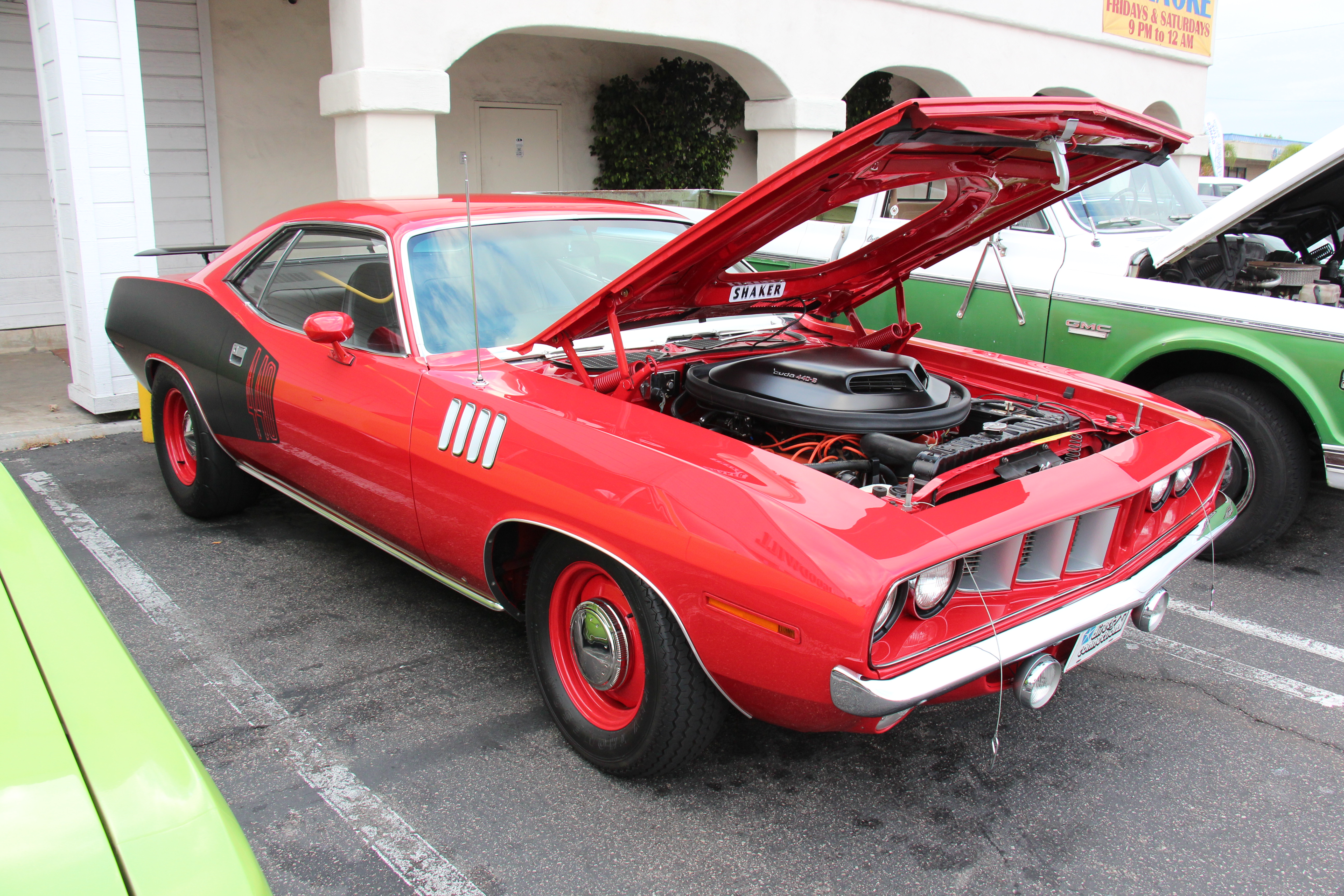
11. **1971 Plymouth GTX 440 Six Barrel**The 1971 Plymouth GTX 440 Six Barrel presented itself as a true velvet hammer, a deceptive and compelling blend of sophisticated styling and brutal, unrelenting force. At its heart lay the formidable 440 cubic-inch (7.2L) Six Barrel V8, an engine that breathed fire through its trio of two-barrel carburetors. This potent setup delivered instant, relentless acceleration, officially rated at a robust 385 horsepower. However, it would be a critical mistake to conflate this raw power with any notion of modern refinement or seamless operation.
The powertrain was a marvel of its time, designed for maximum impact and a visceral driving experience. The combination of the big-block V8 and the triple carburetors meant that power was always on tap, ready to be unleashed with a heavy foot. This was a machine that prioritized brutal performance and a thrilling mechanical connection over any creature comforts or digital interventions.
The gearbox, for instance, was notoriously clunky, demanding precise and deliberate shifts rather than the fluid, effortless transitions expected today. Furthermore, this beast was prone to the exasperating phenomenon of vapor lock on hot days, a mechanical quirk that would leave it sputtering and stalled. Try to imagine explaining “vapor lock” to someone whose most pressing mechanical issue typically involves a dead phone battery; it highlights the vast chasm between automotive eras and expectations.
Anyone under the age of 40, accustomed to effortless driving, might find themselves urgently needing a deep tissue massage after just a few hours wrangling this powerful machine through contemporary traffic. The heavy steering and stiff pedals conspired to create a physical workout with every journey. As for the noise level? Let’s just say that any attempt to make an emergency call to your chiropractor would be entirely off the table, drowned out by the glorious, thunderous roar of that triple-carb big-block engine, a sound that was pure automotive symphony, demanding to be heard.
Car Model Information: 1967 Plymouth GTX Hemi
Name: Plymouth GTX
Manufacturer: Plymouth (automobile)
Production: 1966–1971 (44,178 units)
Class: Muscle car
Assembly: St. Louis, Missouri
Layout: FR layout
Platform: Chrysler B platform
Caption: 1970 Plymouth GTX
Categories: 1970s cars, All articles needing additional references, Articles needing additional references from February 2010, Articles with short description, Cars discontinued in 1971
Summary: The Plymouth GTX is an automobile introduced as the Belvedere GTX in 1967 by the Plymouth division. It was positioned as a mid-sized upscale-trimmed performance muscle car through the 1971 model year.
Get more information about: Plymouth GTX
Buying a high-performing used car >>>
Brand: Plymouth Model: GTX
Price: $119,000 Mileage: 66,594 mi.
Read more about: Feel the Thunder! 15 V-8 Muscle Cars That Prove Raw Power Still Reigns Supreme

12. **1970 Ford Torino Cobra 429 SCJ**The 1970 Ford Torino Cobra, equipped with the mighty 429 Super Cobra Jet engine, was an undeniable threat on the street, but only for those possessing the unique skill to manage its immense power. This formidable machine had a notorious tendency for its rear end to step out with minimal provocation, demanding constant vigilance and deft handling from the driver. Compounding the challenge, its specific gearing made city driving a truly laborious chore, transforming simple commutes into demanding tests of endurance.
The 429 SCJ engine, a powerhouse of its time, delivered astonishing straight-line speed. It was a purebred drag racer, translated for the street, and its performance capabilities were immense for its era. This was not a car for the timid or the inexperienced; it required a driver who understood its temperament and was prepared to engage in a constant dialogue with its mechanical limits.
Today’s drivers, accustomed to the smooth engagement of modern clutches and the effortless precision of contemporary shifters, would likely find themselves frying the clutch in a mere week. They would undoubtedly complain vociferously about the incredibly heavy shifter, a component that required significant physical effort with every gear change. The Torino Cobra was a car that seemed to actively seek confrontation, wanting to engage in a furious battle at every traffic light, challenging its pilot to harness its raw energy.
However, for the select few who truly understood its demanding language and possessed the grit to master it, the Torino Cobra offered an unparalleled reward. It delivered brutal straight-line speed that was nothing short of exhilarating. The driving experience was a pure shot of adrenaline, far more potent and immediate than taking Red Bull intravenously, creating an unforgettable connection between man and machine for those brave enough to tame it and live to tell the tale.
Still Roaring, Just Not for Everyone
These 1970s muscle cars stand as unapologetic icons, forged in a bygone era, largely unconstrained by the crippling emissions regulations, punitive insurance crackdowns, and global oil crises that would eventually temper the horsepower wars. They were never flawless; in truth, many were downright unruly, inherently unsafe by today’s meticulously engineered standards, and often borderline impractical for daily use. Yet, they possessed an undeniable soul—that raw, mechanical charisma that you could feel vibrating deep within your chest even before the key was turned. This formidable soul, however, could prove lethal for many modern drivers.
Car Model Information: 2023 Nissan Rogue SV
Aka: Ford Fairlane (Venezuela)
Name: Ford Torino
Caption: 1970 Ford Torino Cobra SportsRoof
Manufacturer: Ford Motor Company
Production: 1968–1976
Class: Mid-size car,muscle car
Layout: FR layout
Related: Mercury Montego
Assembly: ubl
Predecessor: Ford Fairlane (Americas)
Successor: Ford LTD II
Categories: 1960s cars, 1970s cars, All Wikipedia articles written in American English, All articles with vague or ambiguous time, Articles with short description
Summary: The Ford Torino is an automobile that was produced by Ford for the North American market between 1968 and 1976. It was a competitor in the intermediate market segment and essentially a twin to the Mercury Montego line.
Just as the Ford LTD had been the upscale version of the Ford Galaxie, the Torino was initially an upscale variation of the intermediate-sized Ford Fairlane. In the 1968 and 1969 model years, the intermediate Ford line consisted of lower-trim Fairlanes and its subseries, the upper-trim Torino models. In 1970, Torino became the primary name for Ford’s intermediate, and the Fairlane was now a subseries of the Torino. In 1971, the Fairlane name was dropped altogether, and all Ford intermediates were called Torino.
Most Torinos were conventional cars, and generally the most popular models were the four-door sedans and two-door hardtops. However, Ford produced some high-performance “muscle car” versions of the Torino by fitting them with large powerful engines, such as the 428 cu in (7.0 L) and 429 cu in (7.0 L) “Cobra-Jet” engines. Ford also chose the Torino as the base for its NASCAR entrants, and it has a successful racing heritage.
Get more information about: Ford Torino
Buying a high-performing used car >>>
Brand: Ford Model: Torino Cobra
Price: $21,810 Mileage: 17,649 mi.
Read more about: Unearthing the Roaring Truth: 10 Key Differences Between Ford and Mercury Classic Muscle Cars
Today’s average motorist, having been nurtured on a steady diet of stability control, refined quietness, and a pervasive array of digital nannies, would likely struggle to even begin to comprehend the savage, visceral appeal of these legendary machines. These cars were loud, they were brash, and they were frequently a genuine struggle to tame, but it was precisely these challenging characteristics that cemented their unforgettable status. Ultimately, if the experience of driving one didn’t literally kill you, it most certainly transformed you into a profound believer in the intoxicating power of raw, unadulterated American muscle. The question lingers: even if you *could* handle them, *should* you?

